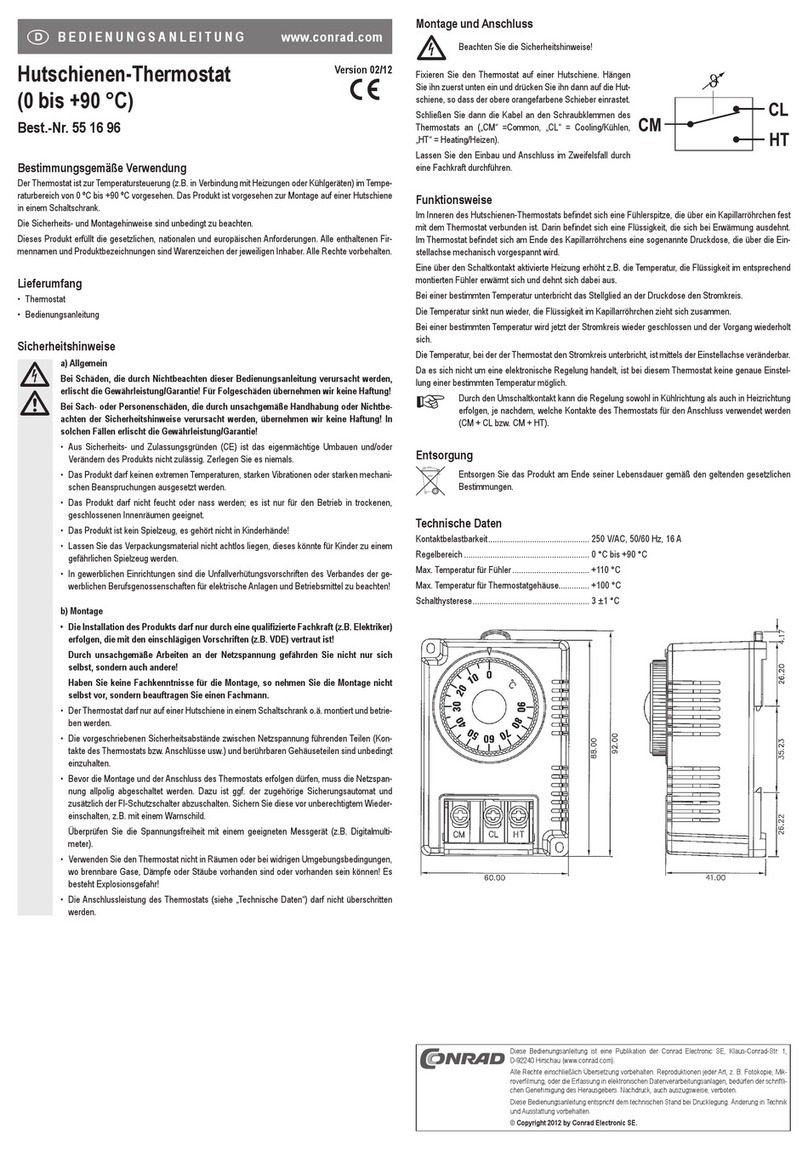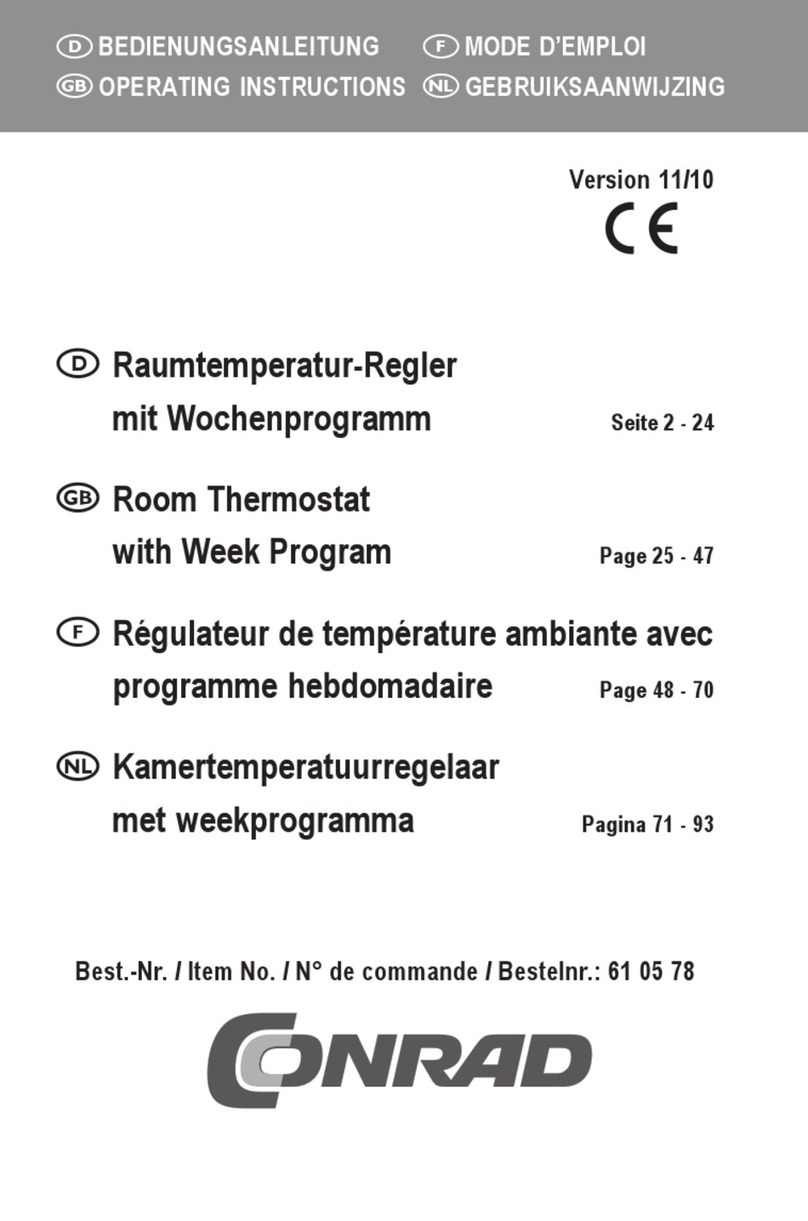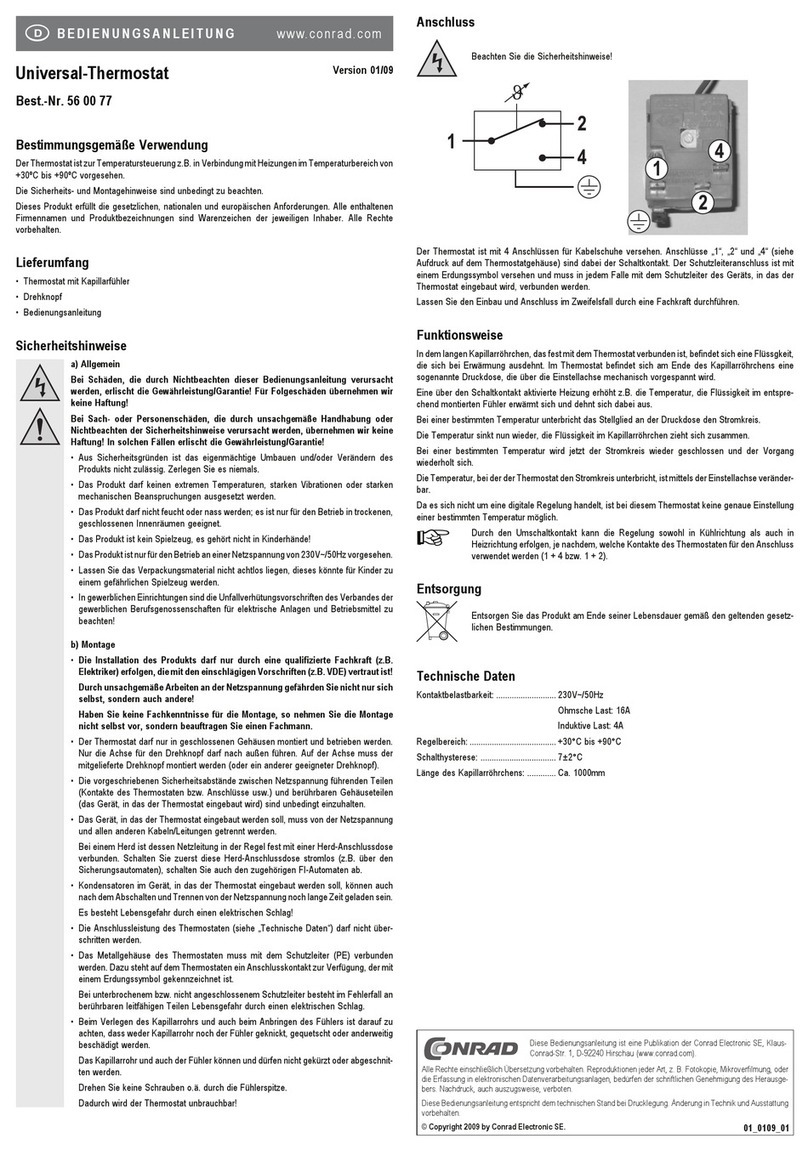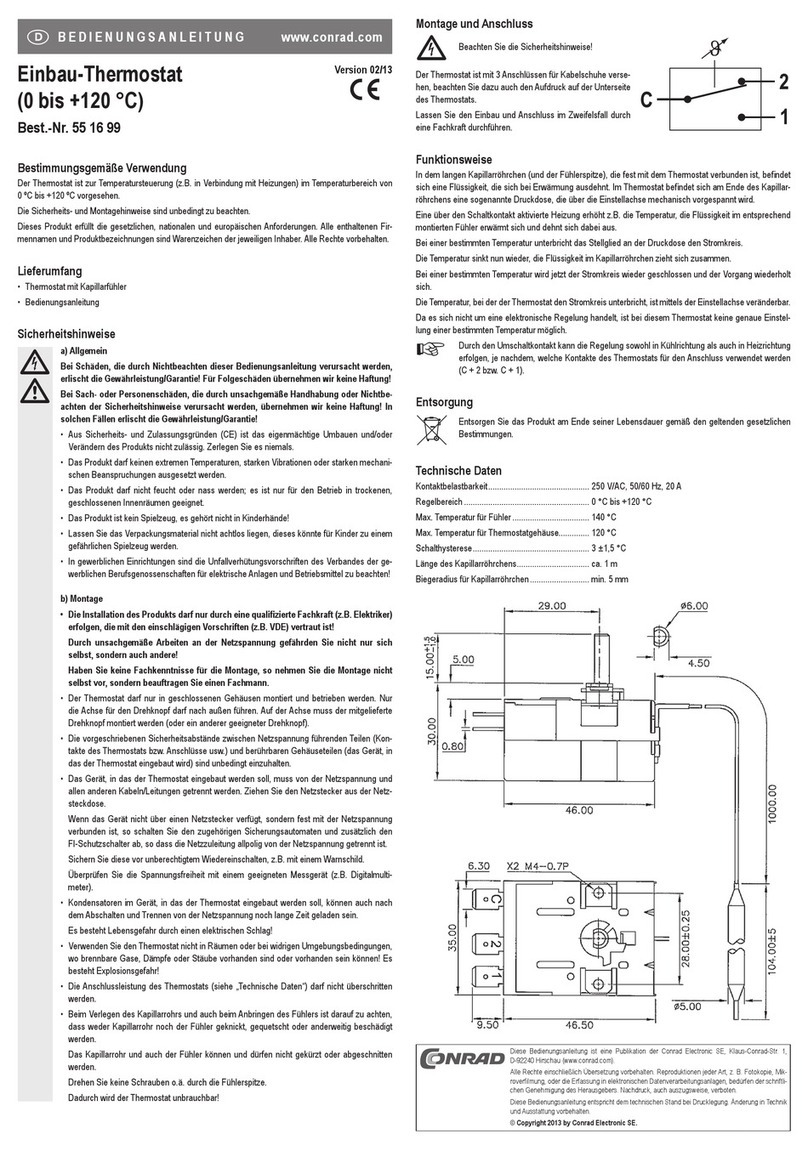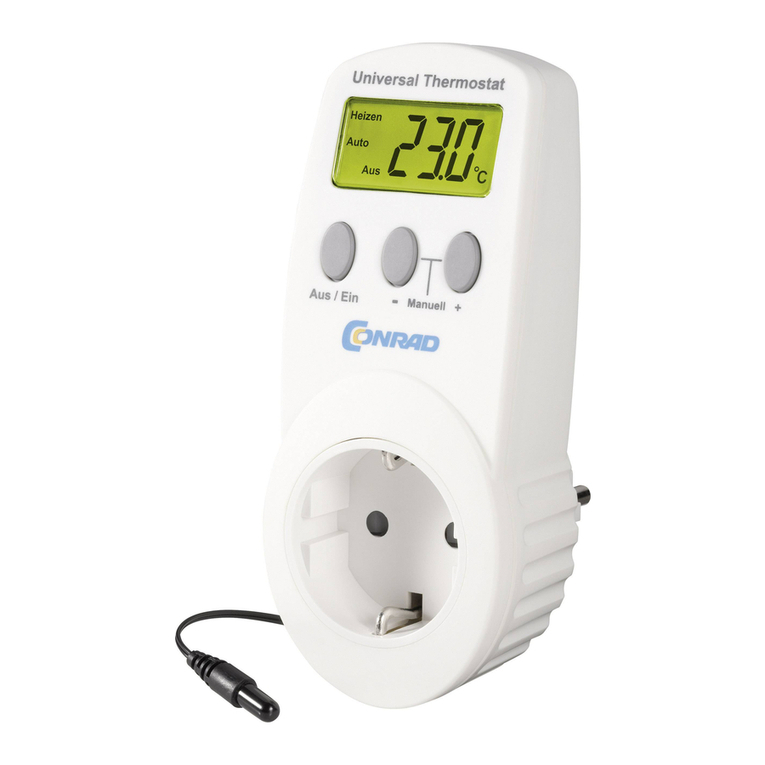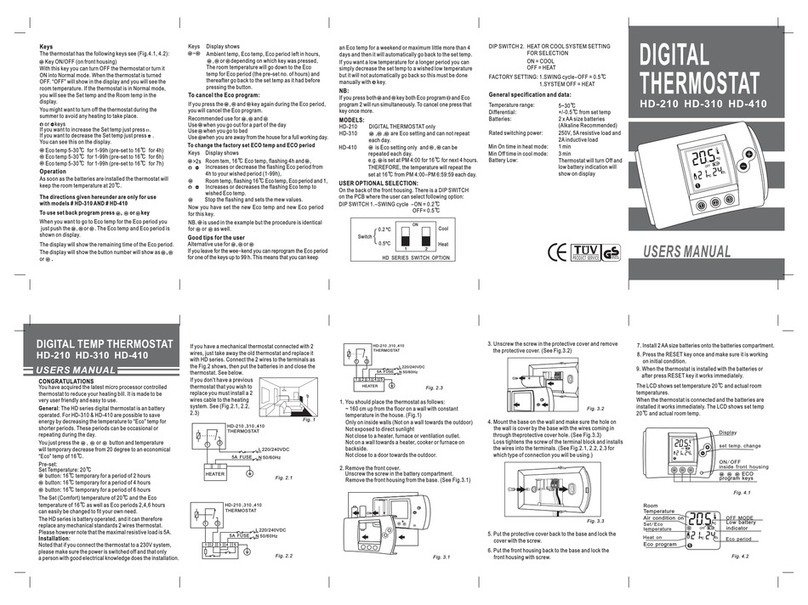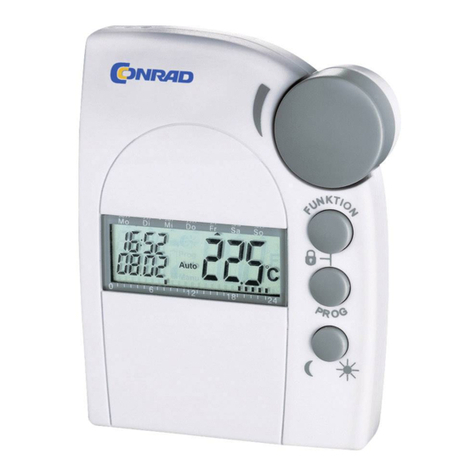4
Page
d) Button lock (for buttons and scroller) ..................................................................... 33
e) Switching between comfort temperature and lowering temperature ................... 34
f) Heating pause ......................................................................................................... 34
g) Closing the valve .................................................................................................... 35
h) Emergency operation of the valve operating mechanism .................................... 35
i) ‘Window open’ detection ........................................................................................ 36
13. Special functions ......................................................................................................... 37
a) Setting the decalcification time (‘CALC’) ............................................................... 38
b) Selecting the temperature unit (°C or °F) ............................................................. 39
c) Setting the date and time (‘dAt’) ............................................................................ 39
d) Setting the security code (‘CodE’) ......................................................................... 39
e) Setting the number of valve operating mechanisms (‘An A’) ............................... 42
f) Synchronising the valve operating mechanisms (‘SYnC’) ................................... 43
g) Test mode (‘tESt’) ................................................................................................... 44
h) Displaying the valve position (‘StEL’) .................................................................... 44
i) Connecting to the home radio central unit (‘CEnt’) ............................................... 45
j) Querying the status of a door/window contact sensor (‘FEn’) ............................. 46
k) Registering a door/window contact sensor ........................................................... 47
l) Deleting door/window contact sensors .................................................................. 48
m) Radiator offset (‘OFFS’) ......................................................................................... 49
14. Replacing the batteries............................................................................................... 50
a) ‘FHT80B-3’ heating control ....................................................................................50
b) ‘FHT8V’ valve operating mechanism..................................................................... 50
c) ‘FHT80TF-2’ door/window contact sensor ............................................................ 51
15. Troubleshooting .......................................................................................................... 52
16. Handling ........................................................................................................................ 53
17. Maintenance and cleaning ......................................................................................... 53
18. Disposal ........................................................................................................................ 54
a) General information ................................................................................................ 54
b) Battery/rechargeable battery disposal ................................................................... 54
19. Technical specifications ............................................................................................ 55
20. Declaration of conformity (DOC) ............................................................................... 55
